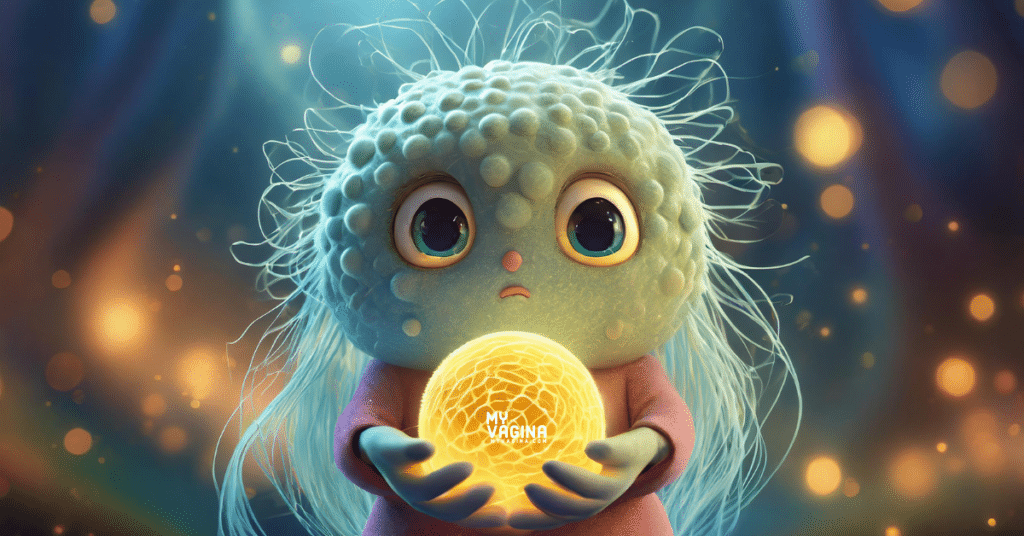Clitorodynia is severe clitoral pain that occurs frequently, either after provocation (touching) or without any trigger (provoked and unprovoked clitorodynia). Clitorodynia is extremely painful and causes significant issues in daily life for sufferers, including sexual function.
The pain may be central to the clitoris or may occur with other genital pain or other pain disorders.
There are two main identified patterns of clitoral pain: localised and generalised.
Clitorodynia is a form of localised vulvodynia. Very little information exists on clitorodynia, but it appears to be associated with other syndromes, such as lichen sclerosus, vulvar vestibulitis, provoked vestibulodynia, multiple sclerosis, and pudendal neuralgia.
Trauma to the area (vaginal delivery, accident, assault) is a common triggering factor.
A known and treatable cause of clitorodynia are keratin pearls, which are little balls of dead skin cells that collect under the clitoral hood, causing irritation and pain.
Another cause is smegmatic pseudocysts, which is a buildup of smegma under the clitoral hood, which may be associated with lichen sclerosus or clitoral adhesions1,2.
Nerve impingements can cause clitoral pain3, so treatment may involve pelvic floor physiotherapy or manipulation, osteopathic, chiropractic or other manual therapies/surgery to alleviate nerve compression.
Treatment for clitorodynia
Treatments rely heavily on thorough investigations by a healthcare team that specialises in pelvic pain to determine the cause; then, a treatment strategy can be devised.
Treatments may include nerve blocks, pain medication, specialist pain therapies and manual therapies such as pelvic floor physiotherapy. Clearance of clitoral adhesions, smegmatic pseudocysts, smegma and keratin pearls may be important.
Supportive treatments include acupuncture, reflexology and other non-invasive therapies known to help with chronic pain.
References4–7
- 1.Wardrop F, Negris O, Milazzo M, Rubin R. (271) Patient with Severe Clitoral Phimosis and Smegmatic Cyst: A Case Report and Review of the Literature. The Journal of Sexual Medicine. Published online February 2024. doi:10.1093/jsxmed/qdae001.259
- 2.Krapf JM, Kopits I, Holloway J, Lorenzini S, Mautz T, Goldstein AT. Efficacy of in-office lysis of clitoral adhesions with excision of keratin pearls on clitoral pain and sexual function: a pre-post interventional study. The Journal of Sexual Medicine. Published online March 21, 2024. doi:10.1093/jsxmed/qdae034
- 3.Smith C, Nero L, Holleyman R, Khanduja V, Malviya A. Hip Arthroscopy for Femoroacetabular Impingement Is Associated With Improved Sexual Function And Quality of Life. Arthroscopy: The Journal of Arthroscopic & Related Surgery. Published online December 2023. doi:10.1016/j.arthro.2023.12.015
- 4.Parada M, D’Amours T, Amsel R, Pink L, Gordon A, Binik YM. Clitorodynia: A Descriptive Study of Clitoral Pain. The Journal of Sexual Medicine. Published online August 1, 2015:1772-1780. doi:10.1111/jsm.12934
- 5.Rubin R, Minton J, Gagnon C, Winter A, Goldstein I. PD25-02 TAKING RESPONSIBILITY FOR FEMALE PREPUCIAL DISORDERS: UROLOGIC MANAGEMENT OF PHIMOSIS-BASED CLITORODYNIA. Journal of Urology. Published online April 2017. doi:10.1016/j.juro.2017.02.1197
- 6.Aerts L, Rubin RS, Randazzo M, Goldstein SW, Goldstein I. Retrospective Study of the Prevalence and Risk Factors of Clitoral Adhesions: Women’s Health Providers Should Routinely Examine the Glans Clitoris. Sexual Medicine. Published online March 17, 2018:115-122. doi:10.1016/j.esxm.2018.01.003
- 7.Radke SM, Stockdale CK. Chronic Clitoral Pain and Clitorodynia. Female Sexual Pain Disorders. Published online August 20, 2020:375-380. doi:10.1002/9781119482598.ch41





